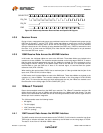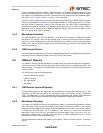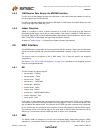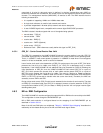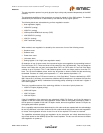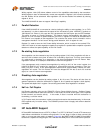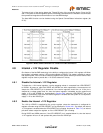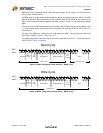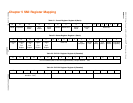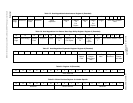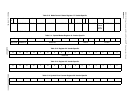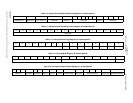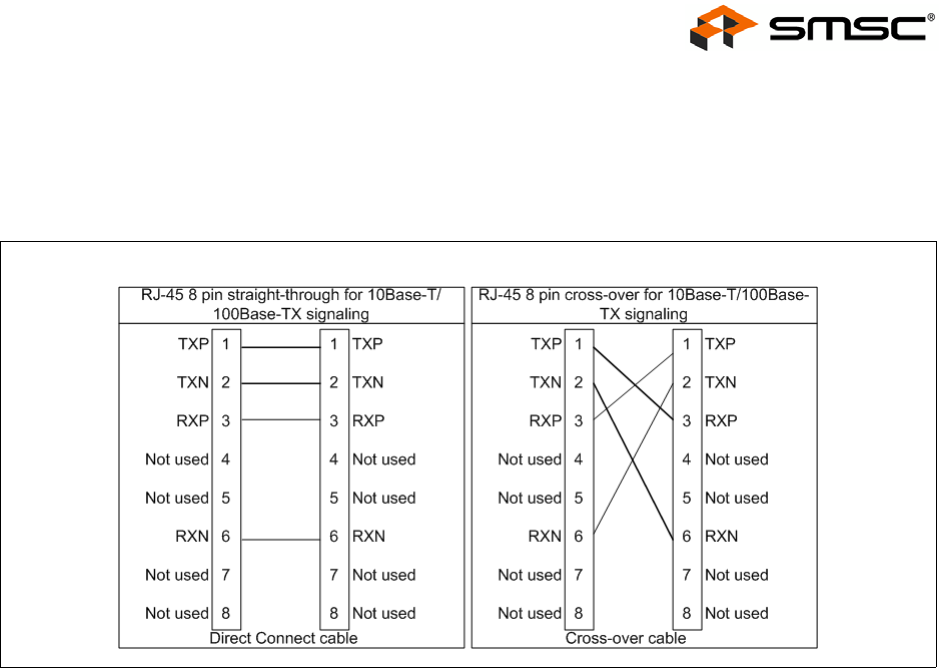
MII/RMII 10/100 Ethernet Transceiver with HP Auto-MDIX and flexPWR
®
Technology in a Small Footprint
Datasheet
SMSC LAN8710/LAN8710i 31 Revision 1.0 (04-15-09)
DATASHEET
The internal logic of the device detects the TX and RX pins of the connecting device. Since the RX
and TX line pairs are interchangeable, special PCB design considerations are needed to accommodate
the symmetrical magnetics and termination of an Auto-MDIX design.
The Auto-MDIX function can be disabled using the Special Control/Status Indications register (bit
27.15).
4.9 Internal +1.2V Regulator Disable
One feature of the flexPWR technology is the ability to configure the internal 1.2V regulator off. When
the regulator is disabled, external 1.2V must be supplied to VDDCR. This makes it possible to reduce
total system power, since an external switching regulator with greater efficiency than the internal linear
regulator may be used to provide the +1.2V to the transceiver circuitry.
4.9.1 Disable the Internal +1.2V Regulator
To disable the +1.2V internal regulator, a pullup strapping resistor is connected from LED1/REGOFF
to VDD2A. At power-on, after both VDDIO and VDD2A are within specification, the transceiver will
sample the LED1/REGOFF pin to determine if the internal regulator should turn on. If the pin is
sampled at a voltage greater than V
IH
, then the internal regulator is disabled, and the system must
supply +1.2V to the VDDCR pin. As described in Section 4.9.2, when the LED1/REGOFF pin is left
floating or connected to VSS, then the internal regulator is enabled and the system is not required to
supply +1.2V to the VDDCR pin.
4.9.2 Enable the Internal +1.2V Regulator
The 1.2V for VDDCR is supplied by the on-chip regulator unless the transceiver is configured for
regulator off mode using the LED1/REGOFF pin as described in Section 4.9.1. By default, the internal
+1.2V regulator is enabled when the LED1/REGOFF pin is floating. As shown in Table 7.10, an internal
pull-down resistor straps the regulator on if the LED1/REGOFF pin is floating.
During VDDIO and VDDA power-on, if the LED1/REGOFF pin is sampled below V
IL
, then the internal
+1.2V regulator will turn on and operate with power from the VDD2A pin.
Figure 4.4 Direct Cable Connection vs. Cross-over Cable Connection




